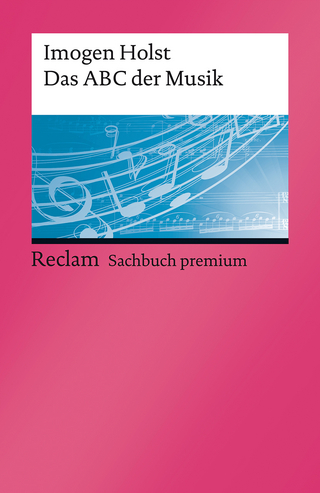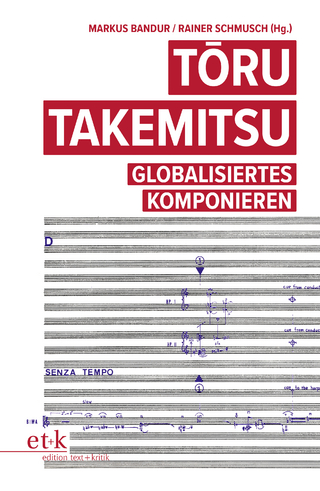
Analog Synthesizers: Understanding, Performing, Buying
Routledge (Verlag)
978-1-138-31938-7 (ISBN)
Making its first huge impact in the 1960s through the inventions of Bob Moog, the analog synthesizer sound, riding a wave of later developments in digital and software synthesis, has now become more popular than ever.
Analog Synthesizers charts the technology, instruments, designers, and musicians associated with its three major historical phases: invention in the 1960s–1970s and the music of Walter Carlos, Pink Floyd, Gary Numan, Genesis, Kraftwerk, The Human League, Tangerine Dream, and Jean-Michel Jarre; re-birth in the 1980s–1990s through techno and dance music and jazz fusion; and software synthesis. Now updated, this new edition also includes sections on the explosion from 2000 to the present day in affordable, mass market Eurorack format and other analog instruments, which has helped make the analog synthesizer sound hugely popular once again, particularly in the fields of TV and movie music.
Major artists interviewed in depth include:
Hans Zimmer (Golden Globe and Academy Award nominee and winner, "Gladiator" and "The Lion King")
Mike Oldfield (Grammy Award winner, "Tubular Bells")
Isao Tomita (Grammy Award nominee, "Snowflakes Are Dancing")
Rick Wakeman (Grammy Award nominee, Yes)
Tony Banks (Grammy, Ivor Novello and Brit Awards, Genesis)
Nick Rhodes (Grammy Award Winner, Duran Duran)
and from the worlds of TV and movie music:
Kyle Dixon and Michael Stein (Primetime Emmy Award, "Stranger Things")
Paul Haslinger (BMI Film and TV Music Awards, "Underworld")
Suzanne Ciani (Grammy Award Nominee, "Neverland")
Adam Lastiwka ("Travelers")
The book opens with a grounding in the physics of sound, instrument layout, sound creation, purchasing, and instrument repair, which will help entry level musicians as well as seasoned professionals appreciate and master the secrets of analog sound synthesis. Analog Synthesizers has a companion website featuring hundreds of examples of analog sound created using dozens of classic and modern instruments.
Mark Jenkins has written about electronic music for Melody Maker, International Musician, Keyboard Player (UK), Keyboard (USA), and many other publications. He has performed and recorded solo and with members of Tangerine Dream, Can, Gong, White Noise, and Van Der Graaf Generator in the UK, USA, Europe, Brazil, Russia, and China, at venues including the Queen Elizabeth Hall, the London Planetarium, the Carnegie Science Center Pittsburgh, the Vanderbilt Planetarium, and the Teatro Nacional in Brazil.
Acknowledgements
About the author
Introduction: what’s so great about analog?
Chapter 1
What is analog?
Sound
Frequency
Amplitude
Wave shape
Harmonics and overtones
Noise
Phase
Synthesizer components
Circuit design
Sound design
Chapter 2
Aspects of analog sound
Voltage-controlled oscillator
Voltage-controlled filter
Envelope generator
Voltage-controlled amplifier
Low-frequency oscillator
White noise source
Sample-and-hold
Wave shaper
Ring modulator
Subharmonic oscillator
Resonator
Frequency shifter
Morphing filter
Vocoder
Sequencer
Keyboard
MIDI interface
Assorted modules
Chapter 3
The birth of analog, the manufacturers and the artists
Moog
ARP
EMS
Oberheim
Sequential circuits
Yamaha
Korg
Roland
Chapter 4
The growth of analog
Italy
France
The Netherlands
Japan
United Kingdom
Germany
USA
Chapter 5
Using and programming analog
Classical and avant-garde programmers
Jazz programmers
Pop and TV music programmers
Rock programmers
Pure synthesizer programmers
Techno-pop programmers
Programming for orchestral imitation
Programming rock, pop and electric sounds
Programming abstract sounds
Ten great analog sounds
Chapter 6
The analog revival, 1980s–2000s
Chapter 7
Programming and using virtual analog hardware and software
Virtual analog programming
Virtual oscillators
Virtual filters
Virtual LFOs
Virtual envelopes
Virtual controllers
Alternative applications
Analog software
Chapter 8
2013-2019 updates: new instruments, Eurorack and movies/TV
Obituaries
New instruments, 2013 onwards
Modules 2013–2019: the Eurorack explosion
Analog goes to the movies
Appendix A Classic instruments: specifications and values
Appendix B Analog and virtual analog instruments: currently or recently in production
Appendix C Purchasing guide for analog instruments
Appendix D Bibliography
Appendix E Discography
Appendix F Contacts
Appendix G Website content: www.routledge.com/cw/jenkins
Index
| Erscheinungsdatum | 28.06.2019 |
|---|---|
| Zusatzinfo | 12 Line drawings, black and white; 246 Halftones, black and white |
| Verlagsort | London |
| Sprache | englisch |
| Maße | 191 x 254 mm |
| Gewicht | 1043 g |
| Themenwelt | Kunst / Musik / Theater ► Musik ► Musiktheorie / Musiklehre |
| Mathematik / Informatik ► Informatik | |
| ISBN-10 | 1-138-31938-4 / 1138319384 |
| ISBN-13 | 978-1-138-31938-7 / 9781138319387 |
| Zustand | Neuware |
| Informationen gemäß Produktsicherheitsverordnung (GPSR) | |
| Haben Sie eine Frage zum Produkt? |
aus dem Bereich


